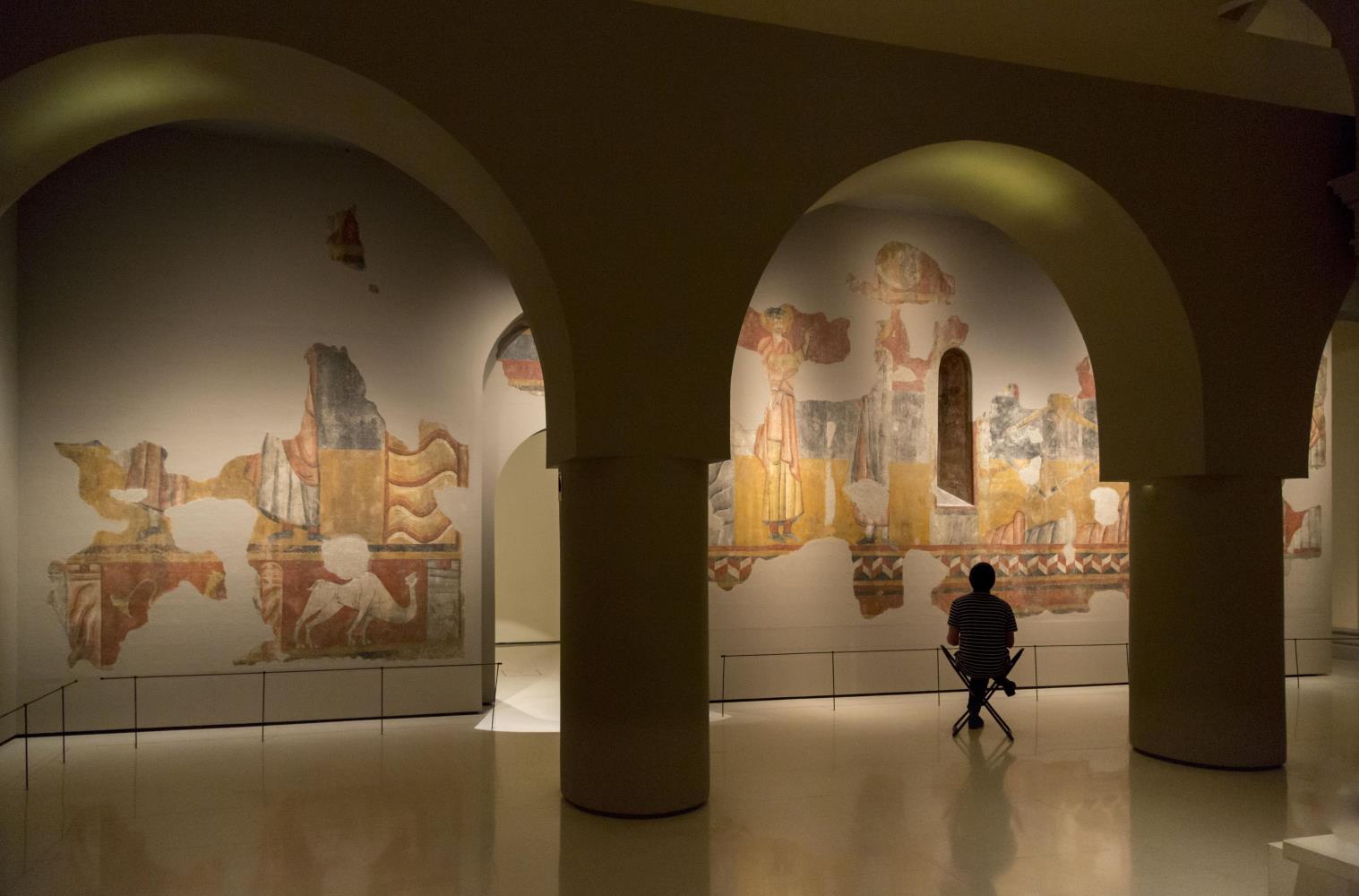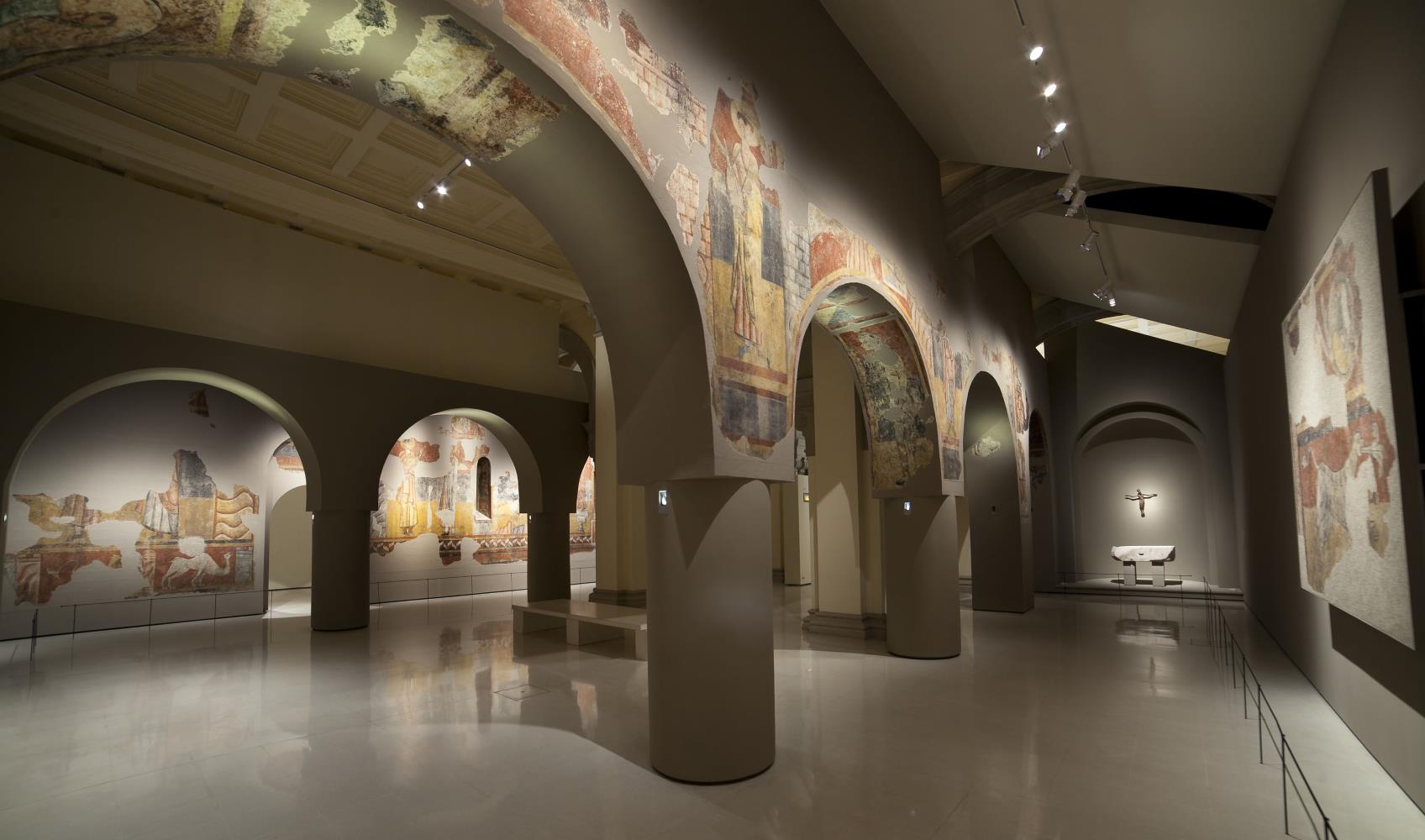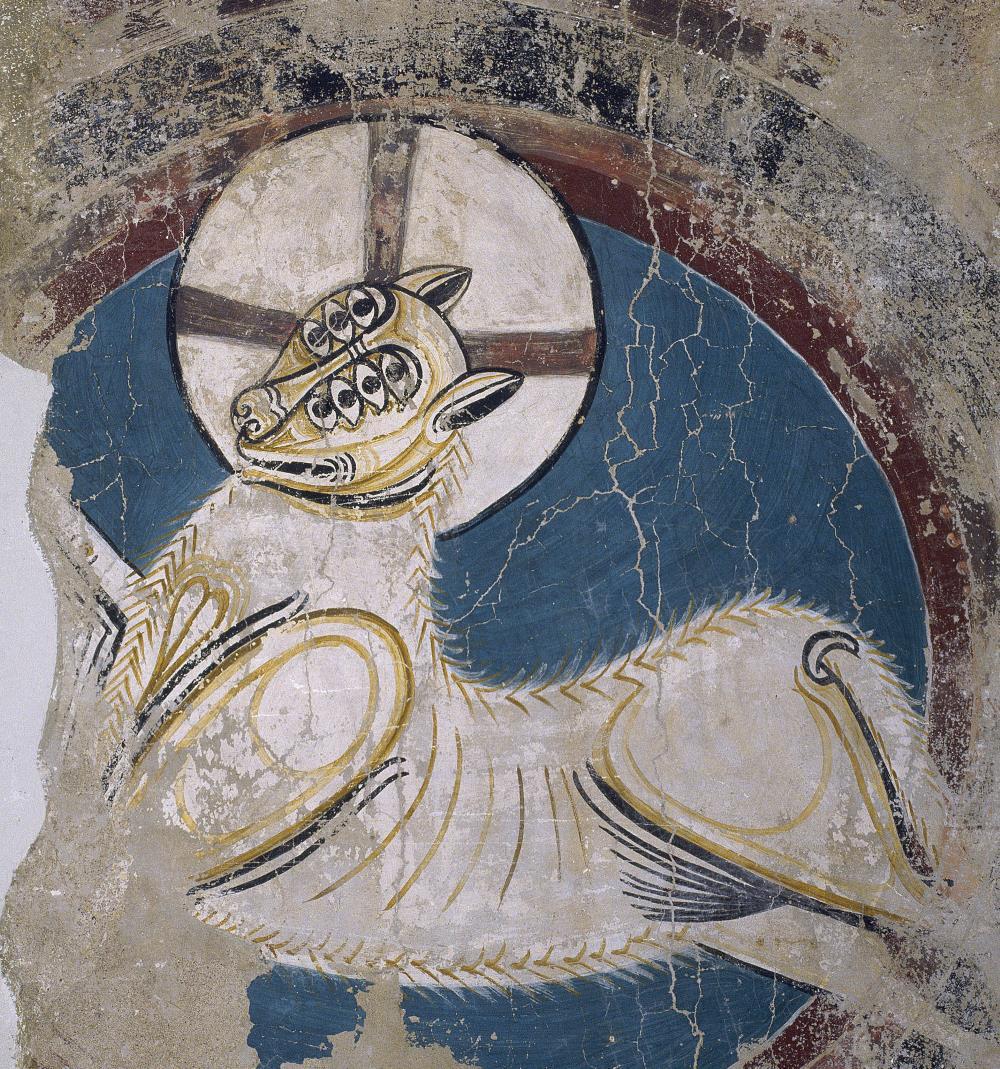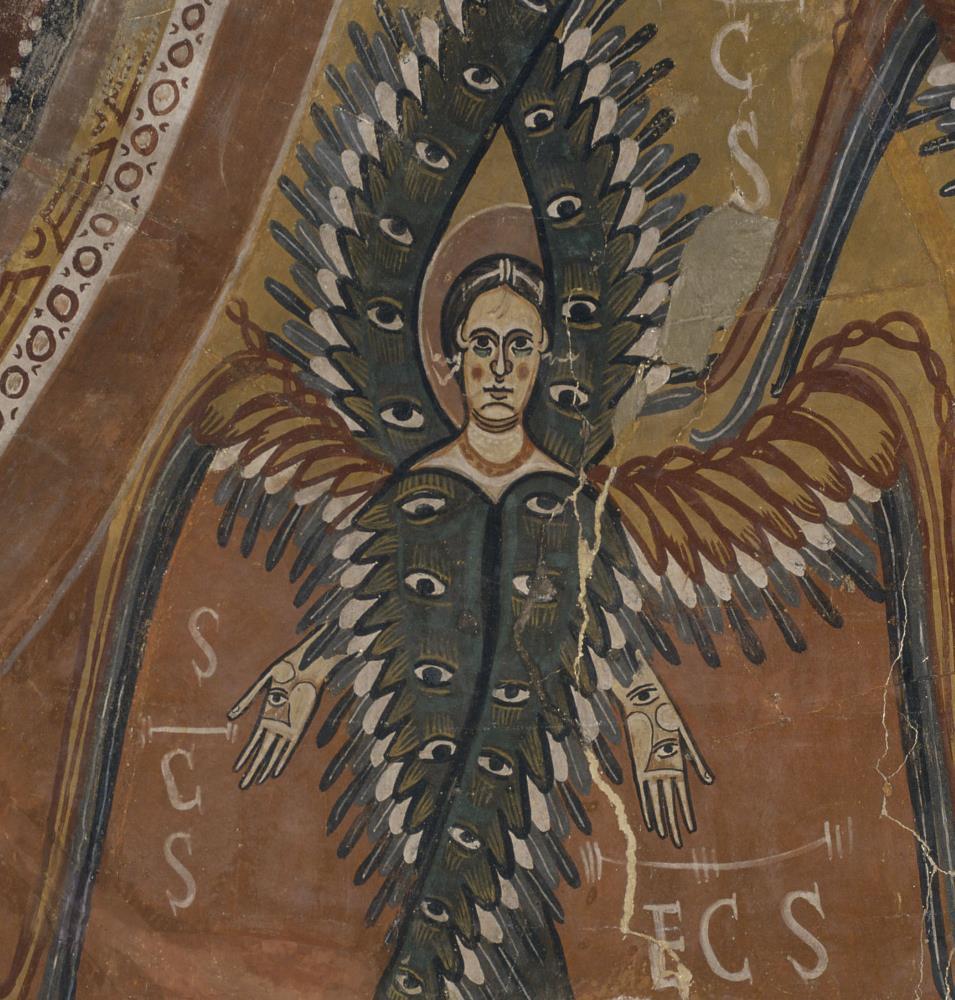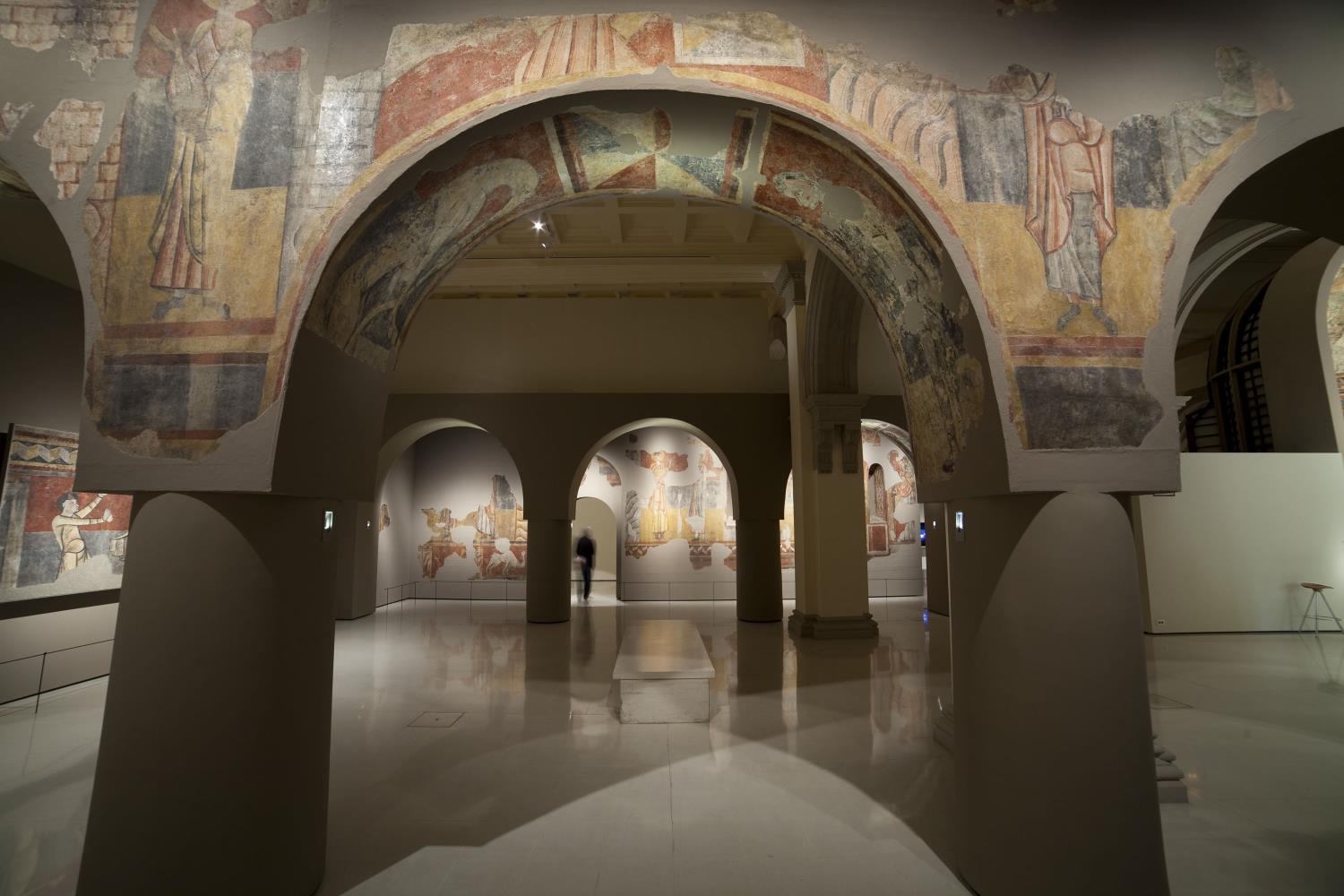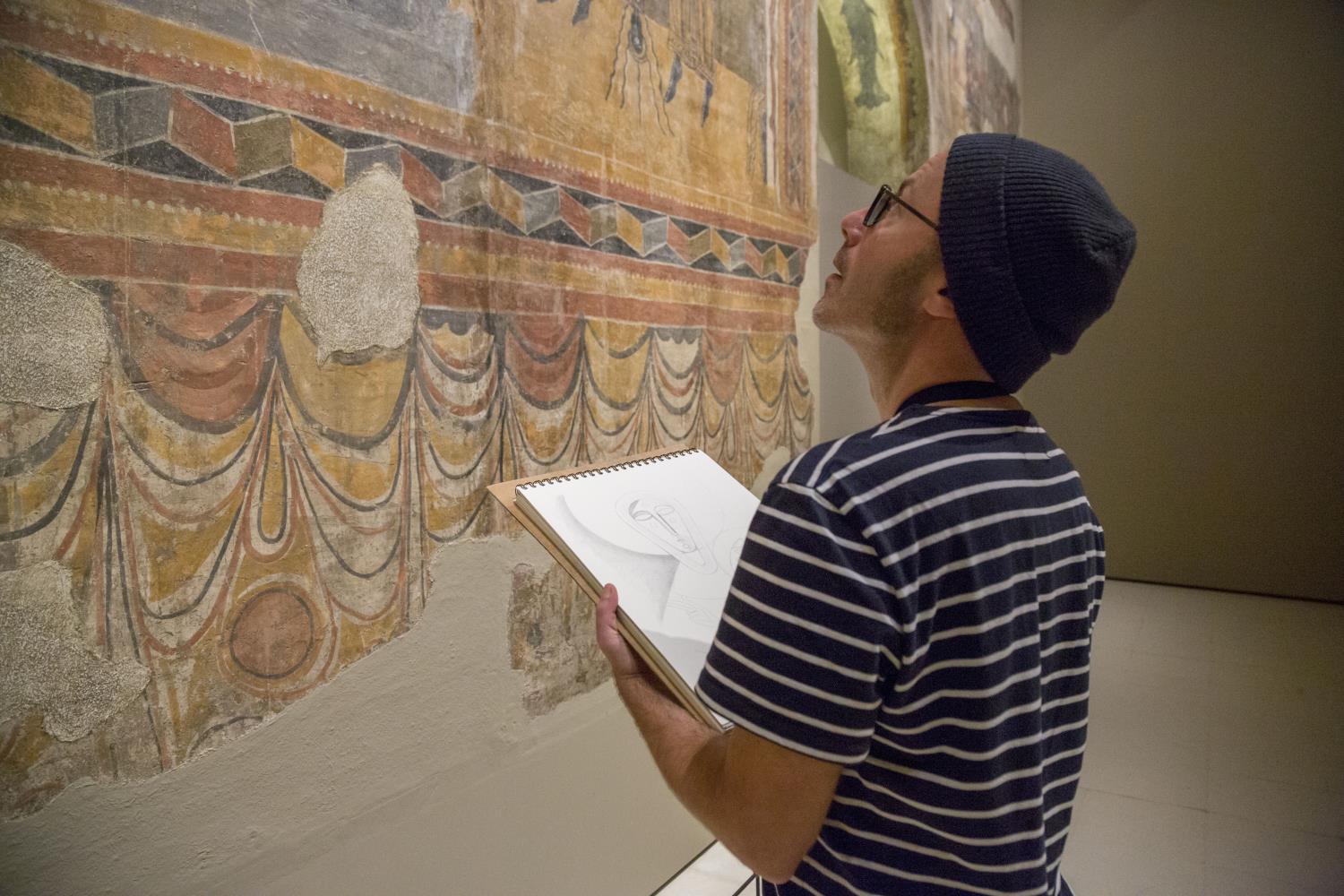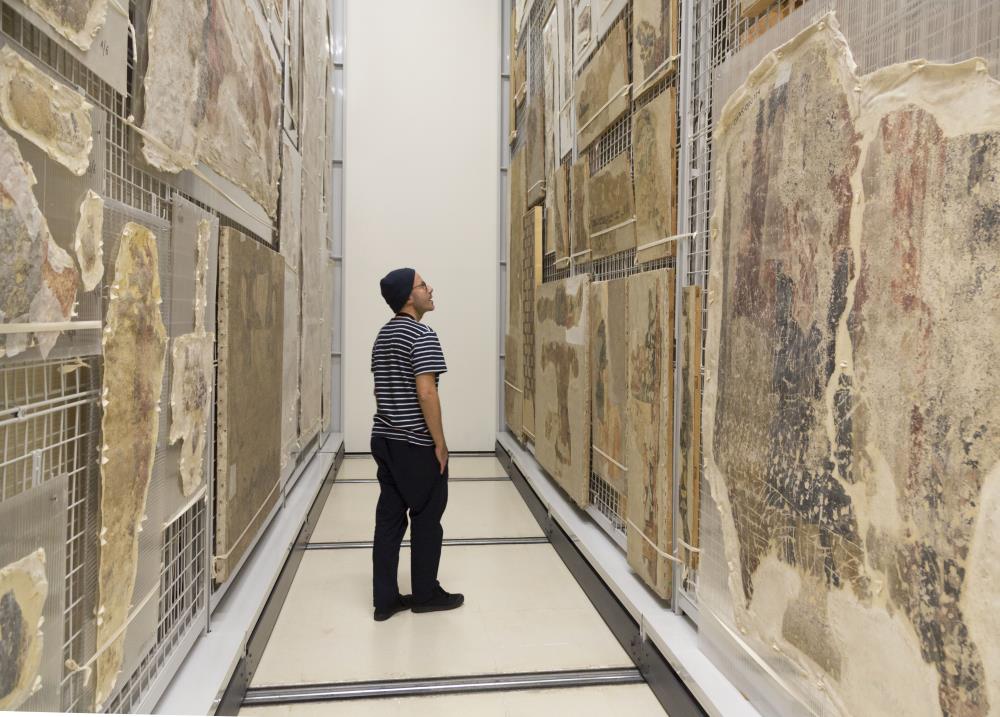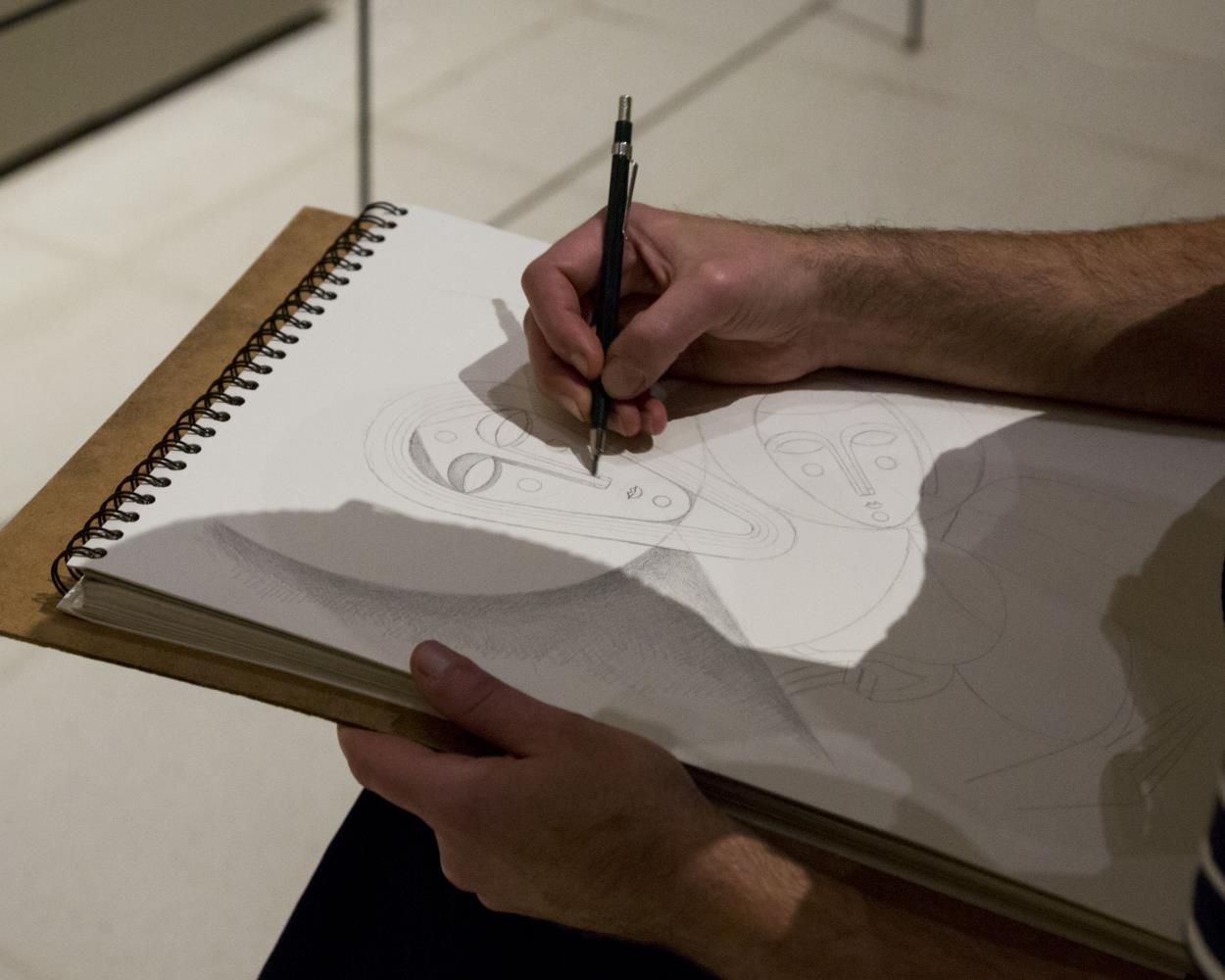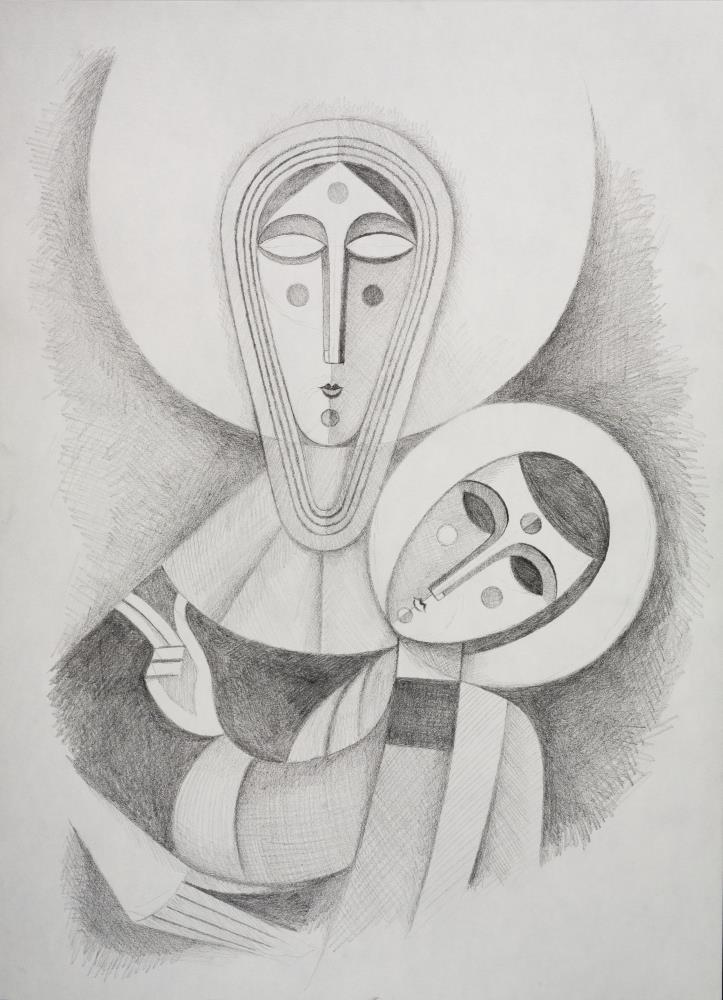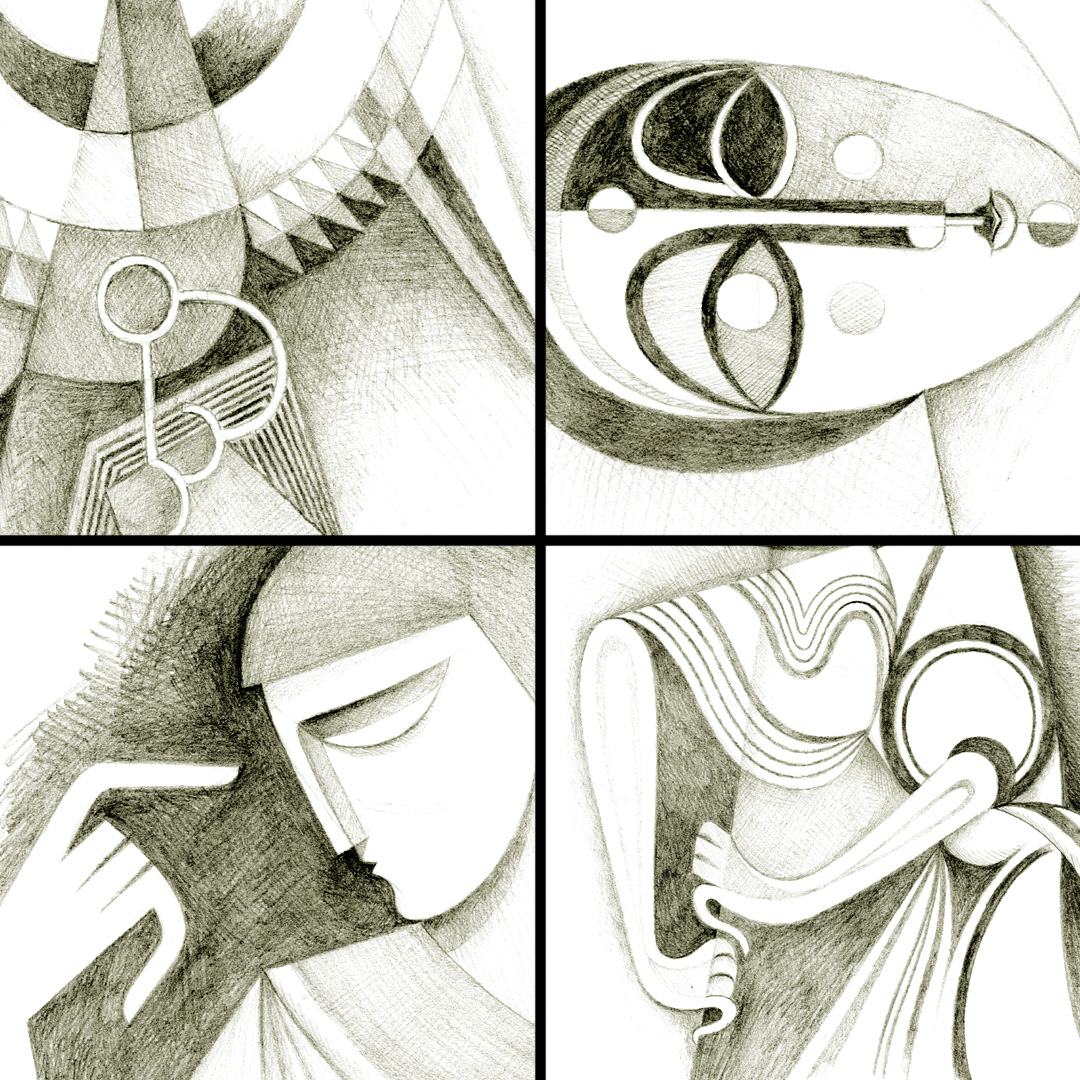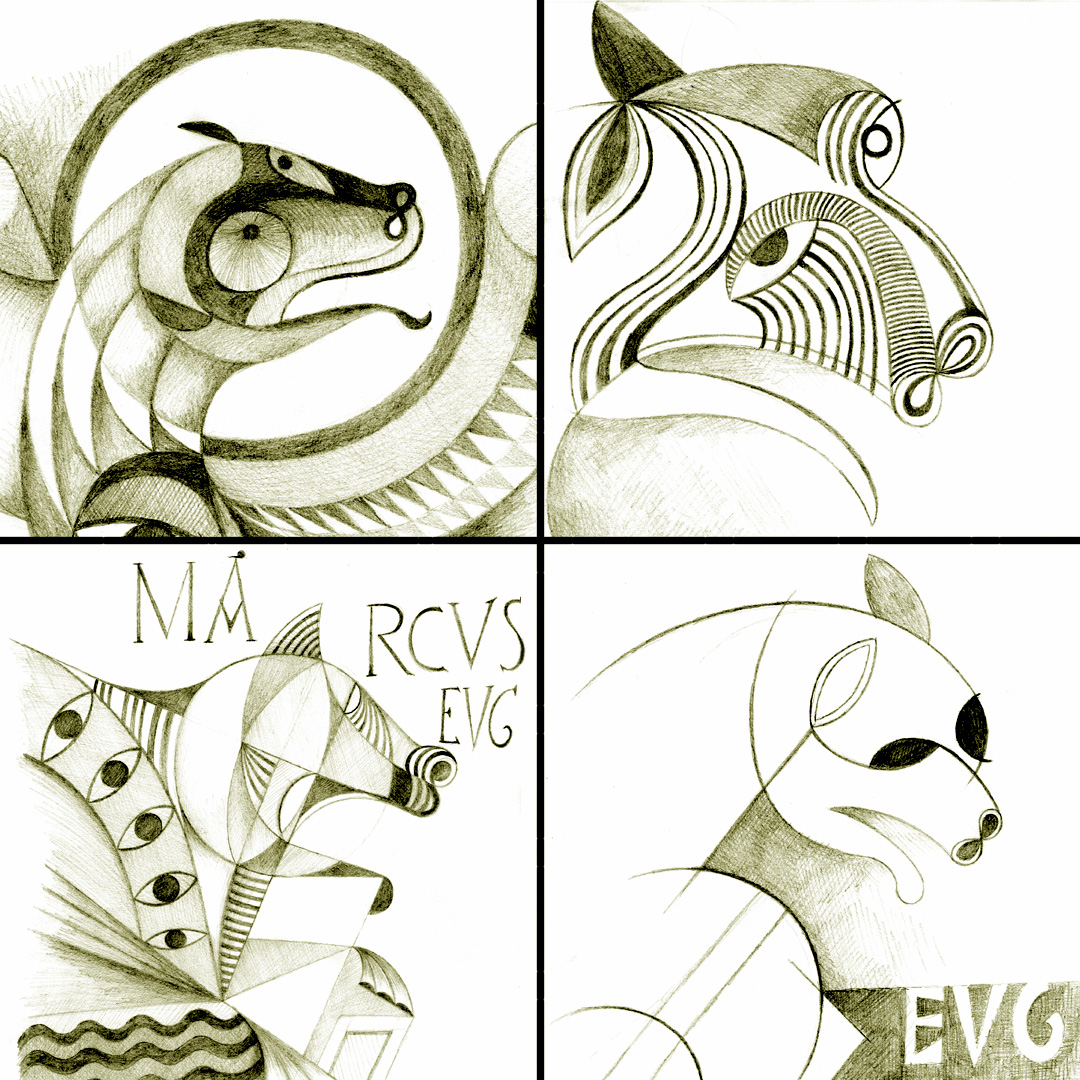Iker Spozio
Italian-born artist Iker Spozio came to the Museu Nacional as someone passionate about ancient art and history, and especially Romanesque painting, for which he feels a special attachment. With the project to reinterpret and translate the Romanesque paintings conserved in the museum into his style, he had a period of residence at the museum to study the works in detail. Now he tells us about his experience:
My first time at the Museu Nacional
When early one morning at the beginning of October 2018, walking towards the train that would take me to Barcelona, I saw the constellation of Orion in the sky, shining clear and bright like never before, I knew that my journey was beginning under a good star.
Barcelona was my destination, seeing as there was going to be an exhibition of my work in a gallery in the Raval, but one of the main purposes of my journey was my visit, which I had been looking forward to for so long, to the Museu Nacional d’Art de Catalunya
Nothing that I had read previously, however, had prepared me for the astonishment that any visitor feels when crossing the threshold of the museum and entering this world of dreams that is the Museu Nacional’s Romanesque art collection.
Astonished by the Romanesque
Hundreds of eyes, eyes on faces, eyes on wings, on the palms of hands, on the bodies of animals, were observing me as I smiled in excitement, almost unable to take in so much beauty together in one place.
As I walked round, stunned by all the wonders around me, I began to formulate a project in my head that, thanks to the Museu Nacional’s collaboration, is now becoming a reality.
I was gradually realizing that the attachment I felt for the Romanesque works in the Museu Nacional went beyond what comes from simple admiration for something beautiful.
My links with the Romanesque
Before anything else, there was a purely technical question, given that my own work has been based for years on ancient materials and techniques, like for example surfaces prepared with calcium caseinate and tempera, a specific technique of medieval painting on wood.
Secondly, many aspects of my work are similar to those recurring in Catalan Romanesque painting and in the Romanesque in general: the tendency to the abstraction of the form and the taste for geometry; the division of the surface according to regular and harmonious patterns and modules; the creation of volumes using the tonal gradation of colour; the use of a relatively small palette and the combination of contrasting and often complementary colours.
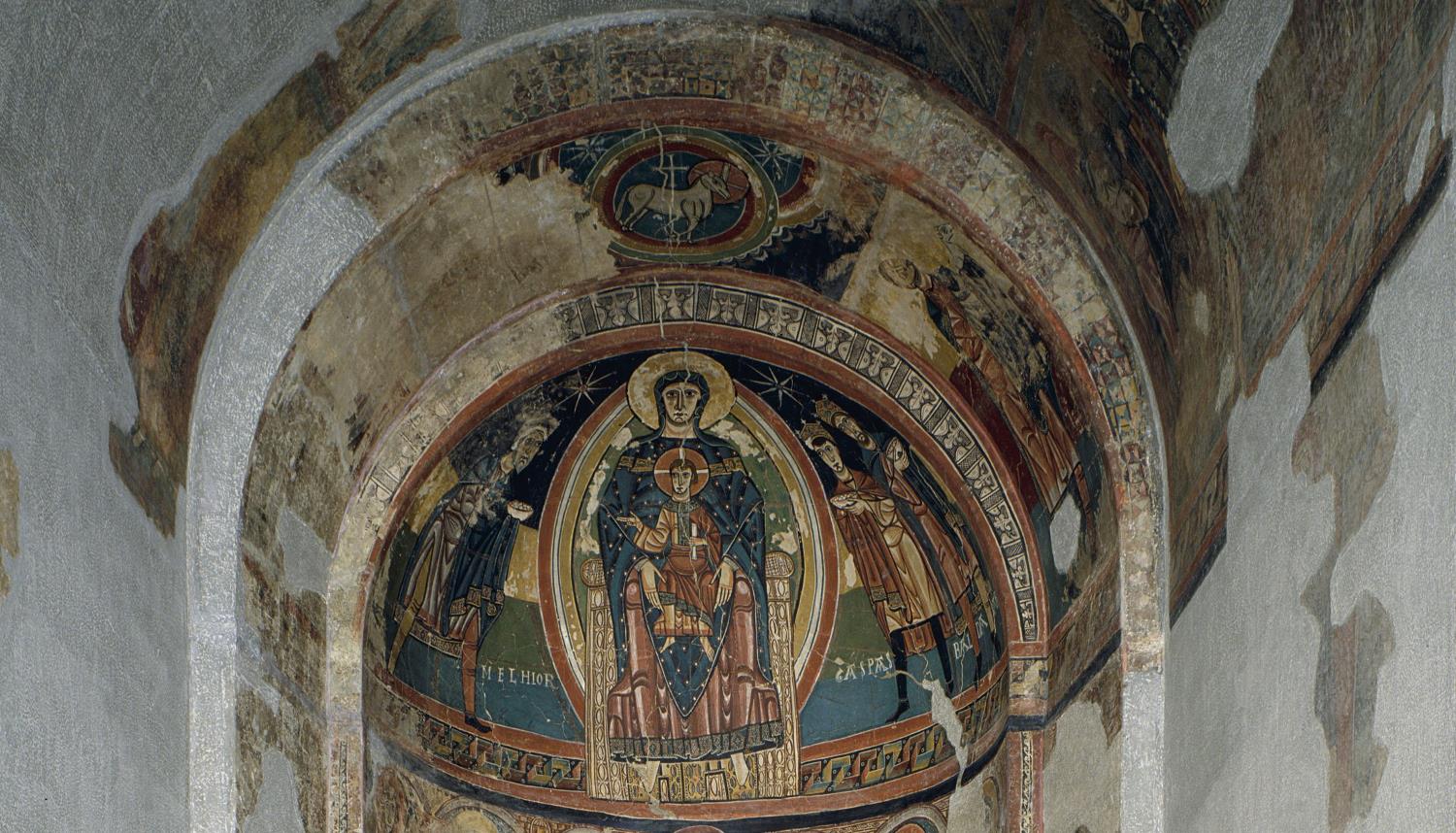
Master of Santa Maria de Taüll, Apse of Santa Maria de Taüll, c. 1123
Finally, another link, this one more emotional, is the fact that I belong to a family, on my father’s side, with a long history of doing mural painting. My father is in fact an expert in fresco and the techniques for transferring mural paintings to a new support and their subsequent conservation.
My Italian roots – I was born in Lombardy – are the same as those of the men who stripped off the frescoes that are now conserved in the Museu Nacional using Strappo – yet another coincidence that led me to decide to devote myself to this project: the personal reinterpretation of the Romanesque paintings in the Museu Nacional.
A month in front of the Romanesque paintings
Having obtained permission from the museum director, on 13 November 2018 I was standing at the entrance door, pencils and notebooks at the ready, prepared to spend a month in the rooms of the Romanesque section, drawing as much as I could every day.
It was a very intense month; the first days were marked by the strange experience of being surrounded by people, while I was getting on with my work, something I am not used to, as I always work completely alone.
But the kindness and the readiness to help of all the people who work in the Museu Nacional and the respect of the visitors meant that I soon felt as if I was in my own studio, and that the hours I was spending in the museum were becoming the best possible routine.
I was gradually developing a style of drawing determined by the context in which I found myself: by the works that were inspiring me, obviously, but also by the atmosphere and the peculiar lighting conditions that characterize the rooms. At times, being immersed in the half-light encouraged me to give free rein to my fantasy, completing according to my taste, on paper half-hidden in the shadows, images actually bathed in light.
A reinterpretation of the Romanesque
Initially my idea was to translate the figurative elements of Romanesque painting into my own language, generally completely abstract, and the result of my month’s stay at the Museu Nacional was a series of sketches that did indeed accentuate the tendency to geometric abstraction already present in the works used as models: the drawings emphasize lines of construction, force or create correspondences, erase ornaments, add or subtract planes.
However, in the end, and to my surprise, my drawings conserved the most basic nature of the original paintings, which in most cases remained quite recognizable.
Many times I had the feeling of being in a sort of mute dialogue with the Romanesque painters, and during the time I spent observing their work, I learned something about them and their view of reality (or, rather, of multiple realities).
Now, back in my studio, I am preparing myself for the necessary “labor limae”, that is, refining the drawings I made, enhancing the positive elements in them and eliminating the negative ones. After that, I shall devote myself to the final stage of my project, which consists of the creation of paintings that are a reflection of my own sensibility and judgment and which, at the same time, may hopefully be a worthy tribute to the marvellous work of the artists who left an indelible mark on Catalonia almost a thousand years ago.
We hope to be able to see the results of all this work!
Related links
Curiosities of the collection: Medieval Art

